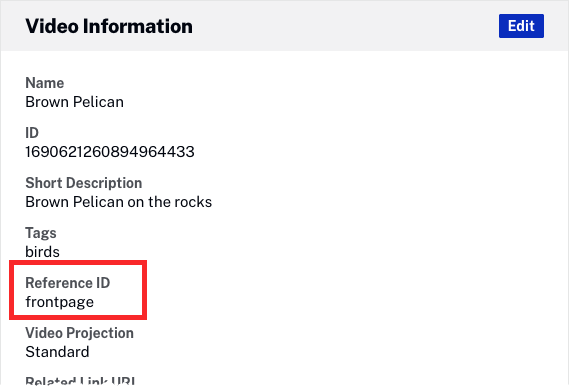Adding a reference ID
First, add a reference ID to your video:
- In Studio, open the Media module, and click the video title to open the video properties.
- Locate the Video Information section and click Edit.
- For the Reference ID property, enter a value for your reference ID.
- Save your changes.
